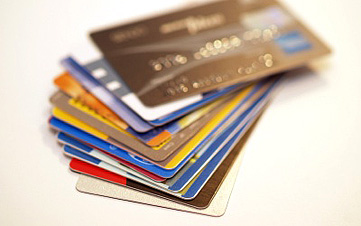
Not all debt is created equal. While most forms of borrowing entail risk, certain credit decisions are more likely to lead you into a downward spiral of indebtedness. We call these debt traps.
It’s incredibly easy to stumble into a debt trap. All it takes is a brief lapse in judgment. Opening a new credit card account without understanding the interest rates and fees, or the implications for your credit score, is just one example.
No one wants to become mired in debt — especially when common borrowing mistakes are avoidable. Read on to educate yourself about seven of the biggest debt traps and ways to avoid them.

Buying Too Much House
In general, you should not spend more than 28% of your gross income on housing expenses, and your total debt-to-income ratio (including car payments, credit card bills, student loans, etc.) should not exceed 36% of your gross income. While those numbers are not set in stone, especially if you live in a high-cost area, they provide a good framework for calculating how much home you can buy, says Adam Granger, a mortgage consultant in Weston, Fla.
Next, figure out the maximum down payment you can make. Try to put 20% toward your new home to avoid paying private mortgage insurance. You also need to factor in closing costs, which typically range between 3% and 5% of the home price. So if you want a home listed at $200,000, you would need to budget at least $48,000 to cover 20% down plus 4% in closing costs.
It is also important to account for homeowners insurance and real estate taxes, both of which can alter your debt-to-income ratio dramatically, says Granger. You’ll probably want some money for decorating, too, and it’s always good to set aside cash for emergencies. If you’re not yet there financially, keep saving. It’s best to buy a home only when you can truly afford it. Buy one when you can’t, and foreclosure is a real possibility.

Co-signing a Loan
Attaching your name to someone else’s debt is tantamount to taking on the debt yourself. If the borrower doesn’t follow through on payments, it is left up to you to foot the bill. And if late fees pile up or there is a default on the loan, your credit rating could be damaged and you might even wind up in court.
Worse, if you suddenly find yourself in need of extra money, you could be denied a loan simply because lenders deem that you already have too much debt due to the co-signed loan. The only sure way to dodge this debt trap is to just say no when asked to co-sign a loan.
If you do opt to co-sign a loan, make sure that in a worst-case scenario you can afford to pay off the debt to avoid a lowered credit rating or legal action. Often, you can negotiate the terms of your obligation with a lender by asking to limit your liability to just the loan itself, and not late charges, attorney fees, etc. You can also ask a lender to let you know if the borrower misses a payment.

Raiding Your 401(k)
It can be tempting to borrow from your 401(k). Loans are tax-exempt and rates are typically much lower than those on credit cards. The trap here is that you appear to be borrowing from a pretty cool lender — yourself. Despite the surface appeal, there are many risks involved in temporarily taking money from your 401(k), even though the cash is, indeed, yours.
Prepare for a dramatic dip in your retirement savings if you leave your job before paying back the loan. Borrowers are typically given 60 days to repay the balance in full. Fail to do so and the loan is deemed a distribution, which can generate a tax bill and early-withdrawal penalties, depending on your age.
The biggest blow can come from lost growth potential. As long as the funds are absent from your 401(k), they can’t grow for your future. Since many plans allow you to borrow up to $50,000 for as long as five years, that’s a lot of lost growth potential.
Only borrow from your 401(k) if it is an emergency and you have tapped all other sources. If you go ahead with a loan, Jeanne Thompson, a 401(k) executive at Fidelity, recommends taking the lowest amount you can get by with and sticking to an aggressive payback schedule. Also try to keep making regular contributions — at least enough to earn the company match — and, most importantly, don’t take the loan if you plan to leave your job or fear a layoff.

Mismanaging Credit Cards
One wrong turn down the credit path can haunt you for a long time. Start with a late payment, which can result in a higher annual percentage rate. If the payment is more than 30 days late, it will likely damage your credit score, too. Once your score takes a hit, so does your future borrowing potential.
Now, as your balance swells each month, it becomes harder for you to pay your bills, which dramatically increases the amount of time it takes you to retire the debt. Further, a damaged credit score makes it difficult to secure new lines of credit, which could force you to charge more on your current card or take out a cash advance.
By using up more of your available credit, you could further damage your credit score, particularly if you exceed 30% of your revolving credit limit. That cash advance also comes with a high price: Interest starts accruing from the day you withdraw the money. Now you have dug yourself deeper into debt, trashed your credit score and are left with fewer borrowing options.
Don’t succumb to these common credit card mistakes. Pay your bills on time, send in more than the monthly minimum, track your credit rating at AnnualCreditReport.com, and keep close tabs on your spending habits.

Binging on Student Loans
The biggest lesson to take away when deciding how much student debt to assume is not to over-estimate your ability to pay it back. The old school of thought used to be not to borrow over the course of four years what it takes to pay for one year of college. However, with sky-rocketing tuition, financial aid advisors such as Kevin Fudge from American Student Assistance are encouraging students to match education costs with future earnings expectations.
Take a close look at the salary range in your dream field. If you want to be a social worker, it might not make sense to take on $150,000 in student debt. Instead, explore more affordable education options. Study at an in-state school rather than out of state, or opt for community college over a four-year university.
Fudge also says that borrowers need to look at the big picture. For example, if you need $5,000 to cover costs for each semester, understand that over the course of four years, that seemingly small amount will add up to $40,000. Graduate school is another important consideration. If a masters or PhD is in your future, then it might be worth looking at less-expensive undergraduate institutions. Finally, exhaust all of your federal loan options before turning to private lenders, says Fudge.

Over-improving Your Home
Remodeling your home can be a smart move, but it can quickly turn into a financial burden if you choose projects that require considerable investment but promise little in return. Research the resale value of various home improvements before you commit to a contractor to dodge this debt trap.
As with all things real estate, location matters. Determine the resale value of home improvements in your area by consulting with local sales agents. Also check out Remodeling magazine’s Cost vs. Value Report, which prices projects by region. A midrange bathroom remodel in New England, for example, averages $17,620 and recoups 61.1% of the cost at resale. The same project out West averages nearly $2,000 more but gets back 79.6%.
Avoid overly personal or over-the-top design choices. Most home buyers gravitate to neutrals. Also beware becoming the best house on the block. You might not recover what you put into the home if your neighborhood isn’t on par with your tricked-out residence.
Then, figure out how you’re going to finance the project. If you have enough equity built up, low-interest-rate options include a home equity loan, home equity line of credit (HELOC) or even a cash-out refinance. Don’t raid retirement accounts to fund the master bedroom of your dreams. If your savings aren’t sufficient and a low-rate loan isn’t available, set aside improvement plans until your resources catch up with your inner designer.

Starting a Marriage in Debt
Money squabbles are a leading cause of divorce, so it makes sense that newlyweds should limit the number of financial obstacles that arise in the early years. While nothing can be done about some of these, such as existing car loans or student debt, overspending on a wedding is a choice — and a poor one at that.
The average wedding in the U.S. costs $18,859, but there are many ways to do a wedding on a budget: Hold the ceremony in a friend’s backyard, trim the guest list, skip the bar or send out wedding invitations online. You can also cut corners by buying a modest engagement ring and putting off the exotic honeymoon. A few years down the road, when you’re on better financial footing, you can splurge on both.
It might be hard to think of the big financial picture when you’re first starting out, but a wedding is just the beginning. Many couples will quickly yearn for a house and kids, but if you’re too busy paying off the wedding bills, it will be difficult to set aside money for a mortgage and a 529 college-savings plan, too. So when deciding what kind of wedding to have, first make a list of other major expenses the two of you will be facing in the next year, five years and even ten years. You’ll live happily ever after if you do.

Profit and prosper with the best of Kiplinger's advice on investing, taxes, retirement, personal finance and much more. Delivered daily. Enter your email in the box and click Sign Me Up.
